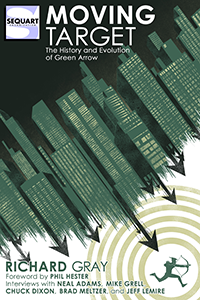Jeff Lemire and Dustin Nguyen’s Descender does what every successful comic does in its first issue: build the world, hook the reader, establish the themes and leave them wanting more. As space opera, it’s remarkably clear and easily comprehensible, but it builds a universe complex enough that there’s a guide to all the major planets included at the end. Perhaps because it borrows from so many familiar science fiction texts (especially AI, Akira and a number of classic literary texts) that the creators can skip a few steps in the world-building. Which helps us get right to the plot.
The first issue covers a span of over a decade and involves a cataclysmic attack on populated planets, leading to political uprisings and societal collapse, but somehow the storytelling seems effortless and light. It’s an impressive feat for Lemire and Nguyen, who seem to have a singular knack for giving the reader just enough information, and not a drop too much.
The story centers around two characters: a famed and celebrated robotics scientist, Dr. Quon, and a robot boy, Tim. (Specifically “Tim-21”, since Tim was the name of his entire line.) Quon begins the story on the major home planet of what is rather boringly called the “Core Planets” of the “United Galactic Council”. (They had to call the planets something, after all, and I respect the creators for going for the dull name, easily understood and put aside in favour of getting into the story.) By the end of the issue, he has undergone the usual fate of sci-fi protagonists, a former genius now haggard and bearded, with a drinking problem and gambling debts, fallen into the lowest rung of society. It’s exactly at this point, so goes the formula, that a stranger arrives to say that they’re the “only man for the job” to save the world. Quon puts his pants on and follows.
Tim, on the other hand, is the last occupant of the moon of Dirishu-6, a mining colony. He awakes after a ten year “sleep” (he’s a robot, so sleep is a relative term), switches on his trust robot dog companion “Bandit”, and explores the colony. It’s here that Lemire and Nguyen creatively bring the reader up to speed on the back story, telling what happened over those intervening ten years, and why, for a start, Tim is alone on this colony. (And why, in statistics given in two title cards, Dr. Quon’s planet has been reduced in population from 5.53 billion to 1 billion.)
Without revealing too much, there’s a relationship between Quon and Tim. It’s an interesting and odd relationship, one that will touch on many issues, including such familiar territory as a promethean use of technology, and the law of unintended consequences. But most interestingly, Descender is going to be, in some ways, about how Dr. Quon deals with fatherhood, and responsibility. Because something he created brought down humanity. Now there’s just this one robot boy with the original version of what he created, at least the only “copy” of that creation in humanity’s hands. But Quon is not the only person looking for Tim. It’s not what Tim carries that makes him valuable, it’s what he is. This leads us into Firefly territory, with Tim in the River Tam role.
But what Tim represents, or perhaps what he will come to represent, is Quon’s legacy in the world. Quon has lost everything: his status, his money, his reputation. Tim is, in a very real sense, his child, both intellectually and in terms of his creative artistry. The way Quon relates to Tim, I predict, will be reflected in the way he relates to all manifestations of his legacy, good and bad. It’s wonderful material that has a powerful set of human emotions at the core: regret, shame, loss and finally redemption.
Dustin Nguyen’s art is perfectly suited to this sort of material, in collaboration with letterer and designer Steve Wands. His light, textured touch with the pencil allows him to mix rendered foregrounds with sketched backgrounds, but also fill in a great deal of background information when necessary. His style emphasizes little flecks of colour, at least in the modern city sequences, evoking the story of diffused light and colour of looking through falling leaves.
The future city’s browns and tans, with wobbly background lines and deep focus, effectively evoke a “fallen” world, and remind us of the strong connections between this sort of genre and the Western. And then his sequences on the Dirishhu Mining Colony are suitably dark and Ron Cobb-influenced, with plenty of chiaroscuro in the shadows. In the comic’s final splash page, Nguyen gets to flex his monster-making muscles a bit, to good effect.
Descender is off to a very strong start. If the quality and clarity, along with the creativity, remains at this level, we could have another science fiction classic on our hands.





















































